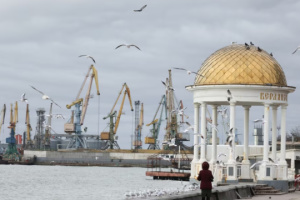
Physical protection systems at energy facilities “performed effectively” on Friday - expert
That’s according to Oleksandr Kharchenko, chief of the Energy Research Center think tank, who spoke in an exclusive comment to Ukrinform, reflecting on the consequences of Russia’s latest massive combined strike targeting Ukraine’s critical infrastructure.
Unfortunately, the expert admits, such protection has not yet been set up at all energy facilities as many projects are just at the start of their implementation. In order to protect most such facilities, significant material and financial resources are required, besides significant time.
"However, the systems set up since war-start actually performed brilliantly. In cases where there was no direct hit to the equipment, that is, the missile physically landed at least 30-40 meters away (this is what for the most part happens with drones ), the equipment remained intact. That is, both gabions and other physical protection systems have proven effective. Of course, I won’t name the exact numbers, but of all the nearly 150 missiles and drones launched by the enemy, about 10 inflicted real damage to the equipment. A few more facilities suffered minor damage due to debris and the blast wave, which is also unpleasant. But the consequences will be eliminated relatively quickly. And this is the result of the physical protection systems having been erected at multiple facilities," Kharchenko stated.
According to the expert, such protection needs to be completed and strengthened, covering more critical sites.
At the same time, it must be taken into account that the systems required for effective protection – especially against direct missile hits – sometimes cost more than the equipment they are intended to protect.
"That is, such powerful and complex structures are needed there that, if we were to build a protection system at an electrical substation to protect it from Kinzhal missiles, it would cost more than the substation itself. Accordingly, does it make any sense to set it up in the first place? In my opinion, it is better to form a reserve of equipment and be able to restore what’s damaged. That’s especially so since not every Kinzhal hits the target precisely. So when it explodes at least 15-20 meters from the target, the physical protection that is being erected is enough to protect the equipment from debris and the blast wave," the expert believes.
As reported earlier, in the early hours of Friday, March 22, Russian invasion forces launched an unprecedented combined missile and drone strike on Ukraine, firing off almost 90 missiles of various types and launching over 60 kamikaze drones. This time, most of the attacks targeted energy infrastructure — thermal power plants, hydroelectric power plants, power lines, and transmission systems.





